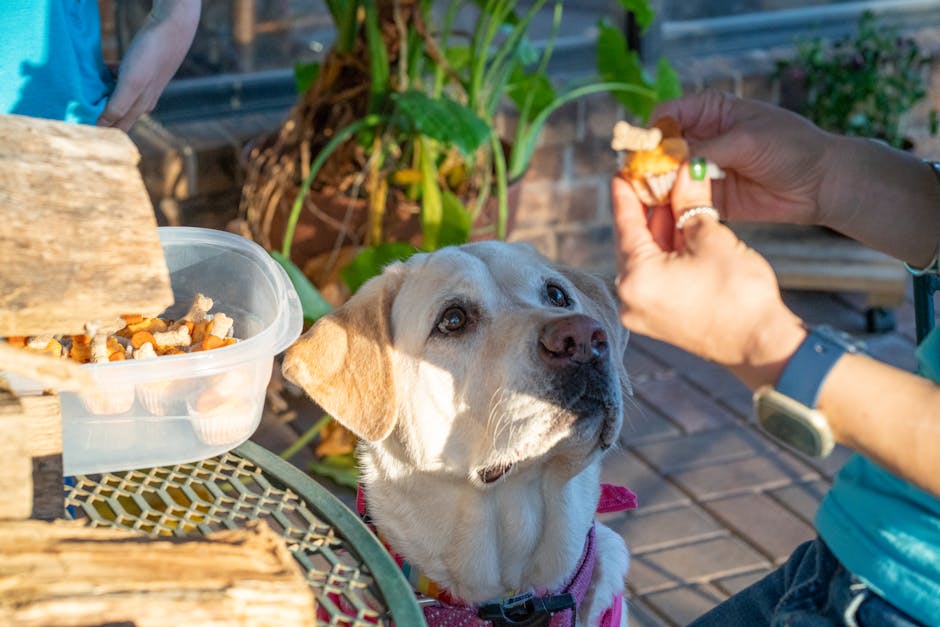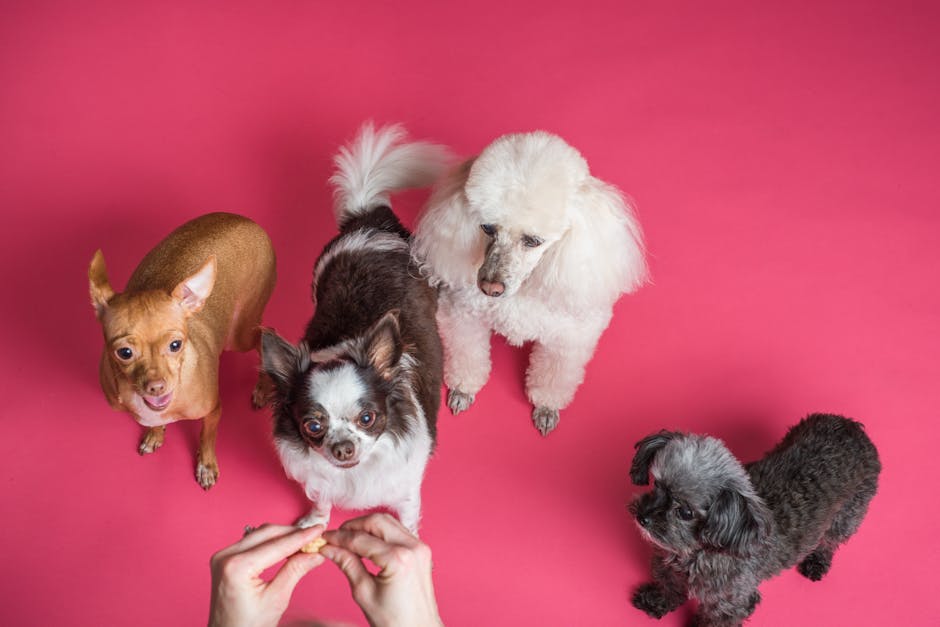Have you ever wondered why obedience training is so important for your dog? It’s more than just teaching them to sit or stay.
Obedience training builds a strong bond between you and your furry friend. It helps your dog understand what you expect, making daily life easier and more enjoyable for both of you. Imagine a world where your dog listens to you, stays safe, and behaves well around others.
That’s exactly what obedience training can do. Keep reading to discover why this training is essential and how it can transform your relationship with your dog.

Credit: hsvb.org
Importance Of Obedience Training
Obedience training is essential for every dog. It helps dogs learn how to behave properly and safely in different situations. Training builds a strong bond between dogs and their owners. It also makes daily life easier and more enjoyable for both.
Without obedience training, dogs can develop bad habits. These habits can cause problems at home and in public places. Teaching basic commands improves communication and trust. This training supports a dog’s mental and physical health by providing structure and activity.
Enhances Safety For Dogs And Others
Obedience training helps control dogs in risky situations. Dogs learn to respond to commands like “stop” or “come.” This can prevent accidents and injuries. A well-trained dog is less likely to run into traffic or approach strangers aggressively.
Strengthens The Owner-dog Relationship
Training creates clear communication between owners and dogs. Dogs feel more confident and secure. Owners feel more in control and connected. This relationship reduces stress for both and builds trust over time.
Improves Social Behavior
Dogs that undergo obedience training behave better around people and other animals. They learn how to stay calm and polite. This makes walks and visits to public places more pleasant. Social skills help dogs adapt to new environments easily.
Prevents Destructive Behavior
Training teaches dogs acceptable ways to express energy. Dogs that lack training may chew furniture or bark excessively. Obedience lessons guide dogs to release energy positively. This protects your home and reduces noise complaints.
Enhancing Communication
Enhancing communication is at the heart of obedience training for dogs. When you train your dog, you’re not just teaching commands—you’re building a language together. This shared understanding helps prevent frustration on both sides and creates a stronger bond.
Clear Signals Create Predictable Behavior
Dogs respond best to clear, consistent signals. When you use the same words and gestures every time, your dog learns what you expect. This predictability reduces anxiety and makes your dog more confident in their actions.
Imagine trying to follow directions if they change every time you ask. Your dog feels the same confusion without clear signals. Consistency is key to smooth communication.
Understanding Your Dog’s Responses
Training helps you notice subtle signs your dog gives, like tail wags, ear positions, or body posture. These clues tell you how your dog feels and what they might need. Paying attention to these signals makes your responses more effective.
Have you ever realized your dog was uncomfortable but didn’t know why? Training sharpens your ability to read these cues, improving your connection and your dog’s comfort.
Reducing Misunderstandings And Frustrations
Miscommunication often leads to unwanted behavior. Your dog might act out because they don’t understand what you want. Obedience training reduces these moments by teaching both of you how to communicate clearly.
This clarity helps avoid frustration for both you and your dog. It turns daily interactions into smooth exchanges, making life together more enjoyable.
Building Trust And Bonding
Building trust and bonding is a key reason dogs need obedience training. Training creates clear communication between you and your dog. This clear communication helps your dog understand what you expect. It also shows your dog that you care about their behavior and safety.
Trust grows when your dog learns that following commands leads to positive outcomes. Your dog feels more secure knowing your guidance is consistent and kind. This security deepens the bond you share, making your relationship stronger.
How Training Encourages Positive Communication
Obedience training uses simple signals and commands. Dogs quickly learn to read your tone and body language. This makes it easier for your dog to respond correctly. Clear signals reduce confusion and frustration for both of you.
Creating A Safe Environment Through Training
Training teaches dogs to listen even in distracting places. This skill keeps them safe from dangers like traffic or harmful objects. Safety builds trust as your dog feels protected by your guidance.
Strengthening The Emotional Connection
Training sessions offer focused time together. This time helps you understand your dog’s personality and needs. Your dog feels valued and loved, which deepens emotional bonds. Happy dogs are more willing to learn and obey.
Promoting Safety
Promoting safety is a key reason for obedience training in dogs. Proper training helps dogs understand boundaries and commands. This reduces risks of dangerous situations for dogs and people around them. Training builds trust and control, creating a safer environment.
Preventing Accidents
Obedience training teaches dogs to listen to commands like “stop” or “stay.” This can prevent them from running into busy streets or dangerous areas. Trained dogs are less likely to cause accidents by jumping on people or knocking things over. Clear commands help owners control their dogs during unexpected events.
Ensuring Public Safety
Well-trained dogs behave calmly around strangers and other animals. This lowers chances of aggressive behavior in public places. Obedience training helps dogs stay focused and controlled in crowded areas. Responsible dog owners protect the community by training their pets properly.
Addressing Behavioral Issues
Addressing behavioral issues is a key reason why dogs need obedience training. Without guidance, unwanted behaviors can become habits that disrupt your daily life and your dog’s well-being. Training helps you understand why your dog acts a certain way and gives you tools to change those behaviors effectively.
Reducing Aggression
Aggression in dogs can be scary and dangerous, but obedience training offers ways to reduce it. Training teaches your dog to respond calmly to triggers instead of reacting aggressively. You’ll learn to recognize early signs of aggression and intervene before it escalates.
Using positive reinforcement, you can reward your dog for calm behavior, which encourages them to repeat it. Consistency is key—practicing commands like “sit” or “stay” during stressful moments can help your dog regain control. Have you noticed your dog growling or snapping? Training can help you turn those moments into opportunities for calmness.
Managing Anxiety
Anxiety can cause excessive barking, chewing, or even self-harm in dogs. Obedience training helps manage these behaviors by creating structure and predictability. Dogs feel safer when they understand what you expect from them.
Simple routines and clear commands reduce confusion and stress for your dog. Teaching your dog to focus on you during anxious moments can prevent panic and destructive behavior. Have you tried redirecting your dog’s attention when they seem nervous? Training offers practical ways to do just that.
Improving Social Skills
Improving social skills is a key reason dogs need obedience training. Well-trained dogs communicate better and feel more confident. They behave calmly around others, reducing stress and fear. Training helps dogs learn the right way to act in different social settings.
Interactions With Humans
Obedience training teaches dogs to listen and respond to commands. This makes meeting new people easier and safer. Dogs learn to wait patiently and avoid jumping on strangers. They become friendly without being overly excited or aggressive.
Good behavior around humans builds trust. Dogs that understand boundaries make owners feel secure. Training also helps dogs enjoy visits to the vet or groomer. Calm dogs handle new people and places without fear.
Interactions With Other Dogs
Training helps dogs play nicely with other dogs. They learn to read body language and respect signals. This reduces fights and misunderstandings during playtime. Dogs develop better manners and share space comfortably.
Obedience skills like “come” and “leave it” keep dogs safe. Owners can control their dogs during walks or at the park. Socialized dogs are happier and less anxious around other dogs. Training creates a balanced and friendly canine companion.
Increasing Dog’s Confidence
Obedience training plays a key role in building a dog’s confidence. Confident dogs handle new situations better. They feel safe and secure in their surroundings. Training helps dogs understand what is expected of them. This clear communication reduces anxiety and fear. As dogs learn commands, they gain a sense of control. Confidence grows with every successful task they complete. This boost in self-assurance leads to a happier, well-adjusted pet.
How Training Builds Trust Between You And Your Dog
Trust is the foundation of confidence in dogs. Training creates a positive bond through clear signals. Dogs learn to rely on you for guidance. They know you will help them navigate challenges. Trust makes dogs less fearful of new places and people. A strong bond improves their willingness to try new things.
Encouraging Positive Social Interactions
Training teaches dogs how to behave around others. Well-behaved dogs feel more comfortable with other dogs and people. Positive social experiences boost their confidence. Training helps dogs understand social cues and limits. This reduces stress and fear during encounters. Confident dogs are less likely to react aggressively.
Setting Clear Boundaries Reduces Anxiety
Dogs feel secure when rules are consistent. Obedience training sets clear boundaries and expectations. Predictable routines lower a dog’s stress levels. Knowing what is allowed helps dogs relax. A calm dog is a confident dog. Boundaries provide a safe framework to explore and learn.
Celebrating Small Successes Encourages Learning
Praise and rewards motivate dogs during training. Recognizing progress, no matter how small, builds confidence. Dogs feel proud when they achieve goals. This positive feedback encourages them to keep learning. Confidence grows with each new skill mastered. Training becomes a fun and rewarding experience.

Credit: backyardpetservices.com
Facilitating Adaptation To New Environments
Dogs face many new places and situations in their lives. Training helps them adjust smoothly. Obedience training teaches dogs how to behave calmly and confidently. It reduces stress in unfamiliar environments. A well-trained dog listens to commands, making changes less scary.
Training builds a dog’s trust in its owner. This trust guides the dog through new experiences safely. Dogs learn to focus on their owners, ignoring distractions. This focus helps dogs stay relaxed and behave well.
Improving Confidence In Unfamiliar Places
Training helps dogs feel safe in new surroundings. Confident dogs explore without fear. They know they can rely on their owners. This lowers anxiety and prevents unwanted reactions.
Teaching Consistent Behavior Across Locations
Dogs respond better when commands are the same everywhere. Training creates clear rules for all places. This consistency helps dogs know what to do. It avoids confusion and bad habits.
Reducing Anxiety Through Routine Commands
Routine commands give dogs comfort in new spots. Familiar words and actions calm their nerves. This lowers stress and keeps dogs focused. Calm dogs adapt faster and behave better.
Building A Strong Owner-dog Bond
Training deepens the connection between owner and dog. This bond provides dogs with security. Feeling secure makes new environments less intimidating. Dogs trust their owners to guide them safely.
Enrichment And Mental Stimulation
Dogs, like humans, need more than just physical exercise to stay happy and healthy. Mental stimulation plays a crucial role in their overall well-being. Obedience training provides a perfect way to engage your dog’s mind, keeping them sharp and preventing boredom.
How Obedience Training Challenges Your Dog’s Brain
Teaching commands requires your dog to think and respond, activating different parts of their brain. This mental workout helps improve their problem-solving skills and focus. When your dog learns new commands, they build confidence and feel more secure in their environment.
Preventing Behavioral Issues Through Mental Engagement
Boredom often leads to destructive behaviors like chewing or excessive barking. Obedience training offers a productive outlet for your dog’s energy and curiosity. By giving your dog a job to do, you reduce anxiety and unwanted habits.
Building A Stronger Bond With Your Dog
Training sessions create moments of connection and trust between you and your dog. Your dog learns to pay attention to you, which enhances communication. This mental engagement strengthens your relationship beyond just teaching commands.
Simple Ways To Add Mental Stimulation During Training
- Introduce new commands gradually to keep your dog interested.
- Use puzzle toys combined with training to challenge their problem-solving skills.
- Change the training environment to add variety and new distractions.
Have you noticed how your dog reacts when you teach them something new? Their excitement and focus can be a clear sign that mental stimulation is just as important as physical exercise.

Credit: offleashk9nova.com
Frequently Asked Questions
Why Is Obedience Training Important For Dogs?
Obedience training helps dogs understand commands and behave well. It builds trust, improves safety, and strengthens the owner-pet bond. Training also prevents behavioral issues and ensures dogs respond well in social settings.
How Does Obedience Training Benefit Dog Behavior?
Obedience training reduces aggression, anxiety, and destructive habits. It teaches dogs self-control and respect for boundaries. Well-trained dogs are more confident, calm, and easier to manage in different environments.
When Should I Start Obedience Training For My Dog?
Start obedience training as early as 8 weeks old. Early training shapes good habits and social skills. Puppies learn faster and adapt better when training begins young.
Can Obedience Training Improve Dog Safety?
Yes, obedience training enhances safety by teaching recall and stop commands. Trained dogs avoid dangerous situations and listen to their owners. This reduces accidents and unwanted behaviors.
Conclusion
Dogs need obedience training for many good reasons. It helps keep them safe in different places. Training also makes life easier for owners every day. Good manners prevent problems with other pets and people. It builds trust and strong bonds between dogs and owners.
Training gives dogs mental exercise and keeps them happy. Everyone enjoys a well-behaved dog that listens well. Start early and stay patient for best results. Obedience training is a key part of caring for dogs.







